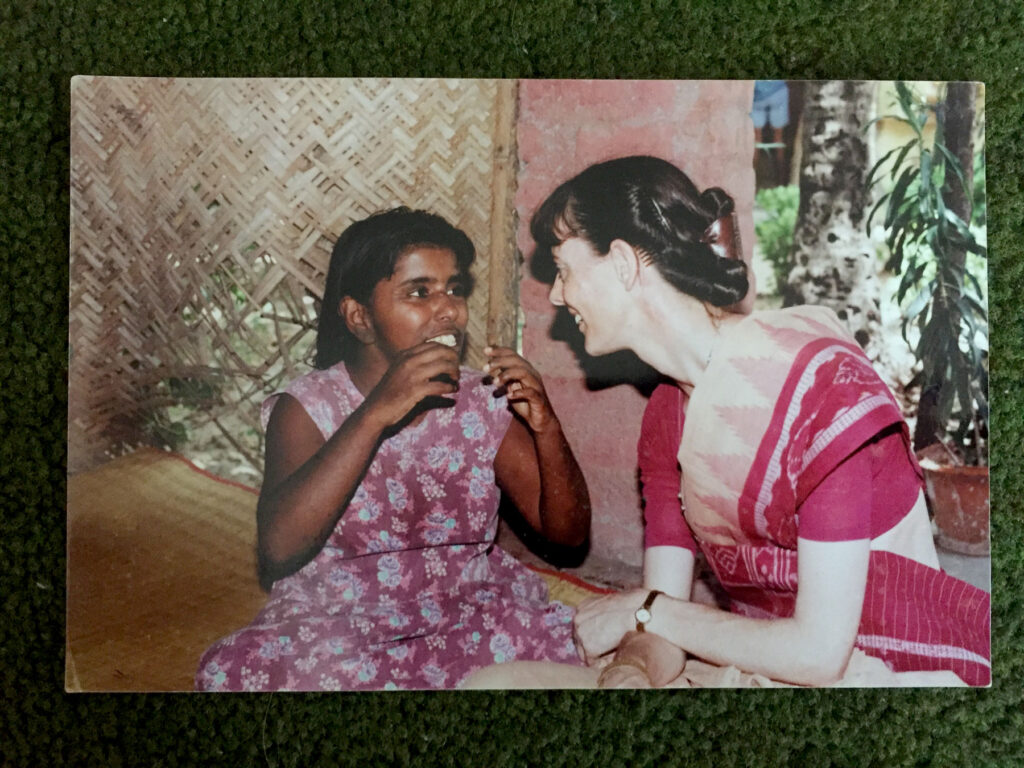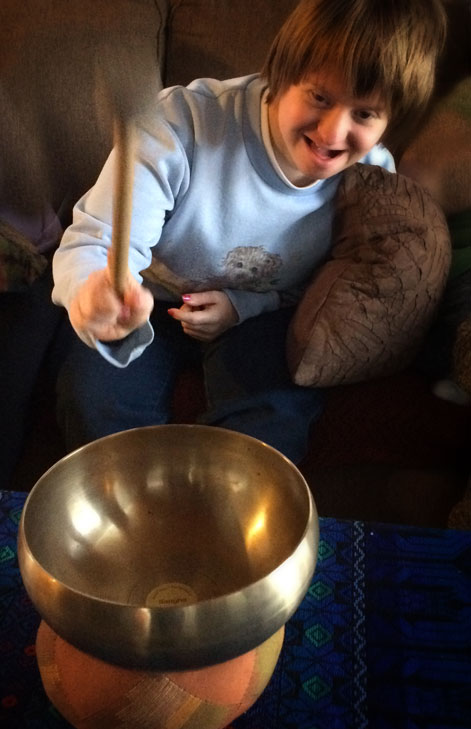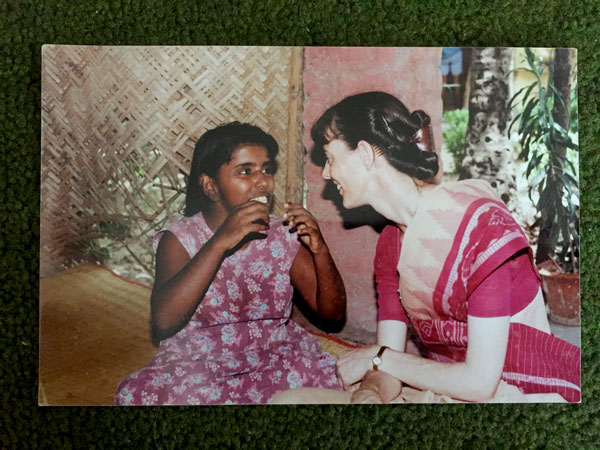“No words. Franci had no words at all,” says Hazel Bradley, a long-term member of L’Arche London, UK, recalling her years in India with Franci Jayaraj. Franci was a lady with an intellectual disability in Asha Niketan, L’Arche Madras (called today Asha Niketan Chennai). “Nor was her life at all ‘easy’. Often, quite the opposite. And yet, Franci, without doubt, is the person who first taught me to be still.”

Teach without words? “Franci would simply take me by the hand, and pull me into the prayer hut where we were alone; and we would just sit and look at each other. We were in prayer…”
 The two women shared no common language, nor nationality, intellectual ability or culture of origin. And yet, their encounter in silence brought each to a place of peace, of one-ness.
The two women shared no common language, nor nationality, intellectual ability or culture of origin. And yet, their encounter in silence brought each to a place of peace, of one-ness.
Silence: where on earth to find that in a world spinning 24/7? Hazel continues: today’s communication revolution is like a non-stop funfair ride. I hear many people saying, “If only we could slow down a bit.” And yet we seem to be going ever faster. It’s as if we know we need a detox tech-break, but we don’t know how.’
Daily life in L’Arche is just as busy as anywhere else. In response, some people are trying out silent meditation. How to begin? Tracey Aitchison in L’Arche Stratford, Canada, has one answer to that question: she always begins by striking the gong! But for any complete beginner, Hazel has teamed up with Mary Robison of the World Community of Christian Meditation (WCCM) to produce Silence and Encounter. It is a short guide-book to sharing silent meditation for people with and without a disability. But many don’t find silence easy: “that’s why it helps to start with someone who has made friends with silence. Let yourself be taught by an expert!”

